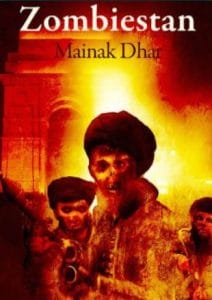Read aloud stories beyond folklore: there are plenty of stories beyond folklore being published in India. It is time to look at the originality and the creativity of these stories. I love the uniqueness of the recent stories that are being published, they have a profound purpose and goes beyond the folklore. In today’s post, we will look at picture book stories about Urban India. These picture books can be used to talk about India: Where we are in place and time OR Who we are? OR Comparing city or village life or urban and rural life.

Fakruddin’s Fridge by Meenu Thomas and
Illus. Tanvi Bhat.
Fakruddin’s Fridge by Meenu Thomas and Tanvi Bhat is about little Fakruddin worrying about everything and asking endless questions. One day, when his fridge stops working, Fakru is frantic! How will he survive a hot summer without cold water? Ammi says: “Think of a way out yourself,” A light-hearted story with cheerful watercolor illustrations which bring alive the ambiance of Fakru’s neighborhood in Bhopal city.
For Ju, old is gold. Her mother brings her hand-me-downs from the homes in which she works and Ju welcomes them like new friends. Ju graciously receives well-used textbooks and the treasures sometimes hidden among their pages: pressed flowers, poems, even a dead butterfly. One day Ju finds a sealed envelope in the maths book. It has a stamp but no address. Ju’s Story is part of ‘Different Tales,’ a project by Anveshi Research Centre Paul Zacharia, sensitively shares this moving story, with Asma Menon’s strong, painterly illustrations suggesting a sense of empowerment. Slums are a part of every city life and cannot be ignored.

Princess Easy Pleasy by Natasha Sharma and Priya Kuriyan
Princess Easy Pleasy is all but easy to please. She drives the royal packer up the wall with her quirks that are as seasonal as her royal vacations. Where does it all stop? This rollicking picture book written by Natasha Sharma and illustrated by Priya Kuriyan guarantees many laughs and gives you a glimpse of another aspect of an urban lifestyle.
Papa’s Marathon by Nalini Sorensen and paired with Prashant Soni’s illustrations is a lighthearted story is about fitness goals that go awry and the unflagging faith of family. A cheerful story, about Gia’s Papa who has signed up for the marathon. And he buys clothes and fancy gadgets to match his new hobby. A story about Gia and her grandmother who become his biggest cheerleader. Another glimpse into some of the urban lifestyle’s in India.
Enjoy these stories and should you have others to share, please add them to the list. Most of these stories books can be found with Peacock Feathers.

















